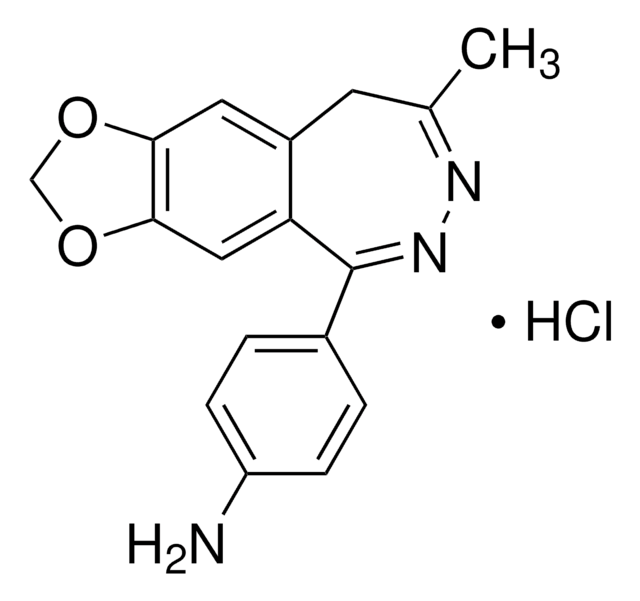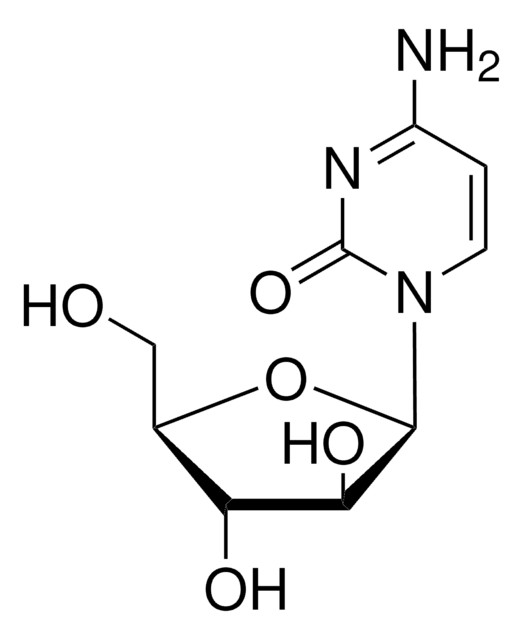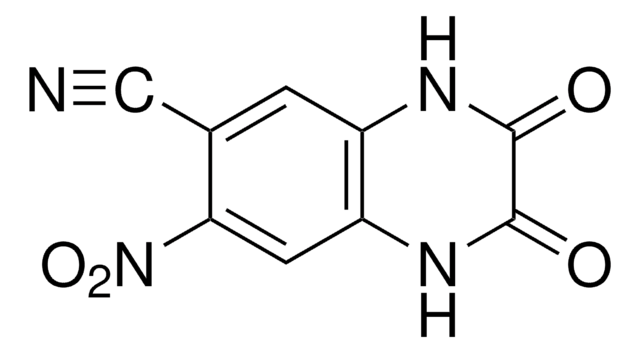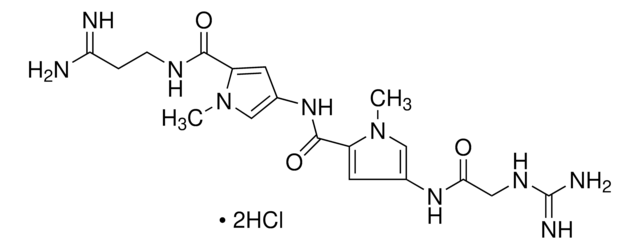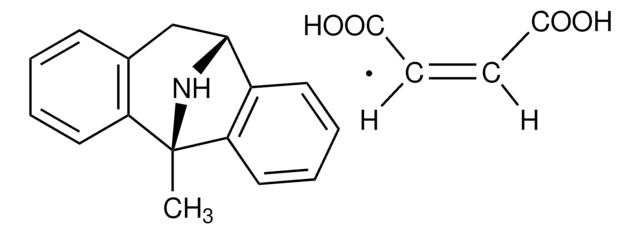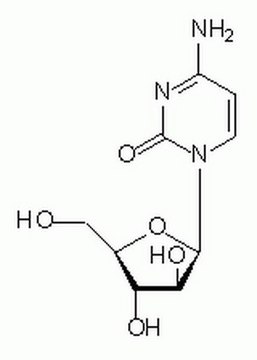All Photos(1)
Synonym(s):
1-(4-aminophenyl)-3-methylcarbamyl-4-methyl-3,4-dihydro-7,8-methylenedioxy-5H-2,3-benzodiazepine hydrochloride, 5-(4-Aminophenyl)-8,9-dihydro-N,8-dimethyl-7H-1,3-dioxolo[4,5-h][2,3]benzodiazepine-7-carboxamide hydrochloride, LY300168 hydrochloride hydrate
Empirical Formula (Hill Notation):
C19H20N4O3 · HCl · xH2O
Recommended Products
Quality Level
Assay
>99.0% (HPLC)
form
powder
color
yellow to orange
solubility
H2O: >10 mg/mL
storage temp.
2-8°C
InChI
1S/C19H20N4O3.ClH/c1-11-7-13-8-16-17(26-10-25-16)9-15(13)18(22-23(11)19(24)21-2)12-3-5-14(20)6-4-12;/h3-6,8-9,11H,7,10,20H2,1-2H3,(H,21,24);1H
InChI key
ASLCSBBDVWPSQT-UHFFFAOYSA-N
Application
GYKI-53655 hydrate has been used as a calcium-permeable α-amino-3-hydroxy-5-methyl-4-isoxazolepropionic acid receptor (AMPA) receptor antagonist in single-particle tracking experiments.
Biochem/physiol Actions
GYKI-53655 also inhibits the kainate GluK3 homomeric and GluK2/3 heteromeric receptors. It exhibits anti-ischemic, anti-convulsant, and acute neuroprotective activity.
GYKI-53655 is an AMPA antagonist and noncompetitive negative allosteric modulator.
Features and Benefits
This compound is featured on the Glutamate Receptors (Ion Channel Family) page of the Handbook of Receptor Classification and Signal Transduction. To browse other handbook pages, click here.
Signal Word
Danger
Hazard Statements
Precautionary Statements
Hazard Classifications
Acute Tox. 3 Oral
WGK
WGK 1
Flash Point(F)
Not applicable
Flash Point(C)
Not applicable
Certificates of Analysis (COA)
Search for Certificates of Analysis (COA) by entering the products Lot/Batch Number. Lot and Batch Numbers can be found on a product’s label following the words ‘Lot’ or ‘Batch’.
Already Own This Product?
Find documentation for the products that you have recently purchased in the Document Library.
T Szabados et al.
Brain research bulletin, 55(3), 387-391 (2001-08-08)
GYKI 52466 [1-(4-aminophenyl)-4-methyl-7,8-methylenedioxy-5H-2,3-benzodiazepine], a non-competitive AMPA [alpha-amino-3-hydroxy-5-methyl-4-isoxazolepropionate] and kainate receptor antagonist and its two analogues, GYKI 53405 [1-(4-aminophenyl)-3-acetyl-4-methyl-3,4-dihydro-7,8-methylenedioxy-5H-2,3-benzodiazepine] and GYKI 53655 [1-(4-aminophenyl)-3-methylcarbamyl-4-methyl-3,4-dihydro-7,8-methylenedioxy-5H-2,3-benzodiazepine] were investigated in two seizure models and in MgCl2 induced global cerebral ischaemia, as an acute neuroprotective model.
David Perrais et al.
Neuropharmacology, 56(1), 131-140 (2008-09-02)
A number of kainate receptor antagonists have shown selectivity for receptors containing the GluK1 subunit. Here, we analyze the effects of these GluK1 antagonists on currents mediated by recombinant homomeric GluK3 and heteromeric GluK2/3 receptors expressed in HEK 293 cells
Alice Polenghi et al.
Cell reports, 31(10), 107735-107735 (2020-06-11)
Kainate receptors (KARs) mediate postsynaptic currents with a key impact on neuronal excitability. However, the molecular determinants controlling KAR postsynaptic localization and stabilization are poorly understood. Here, we exploit optogenetic and single-particle tracking approaches to study the role of KAR
Our team of scientists has experience in all areas of research including Life Science, Material Science, Chemical Synthesis, Chromatography, Analytical and many others.
Contact Technical Service
